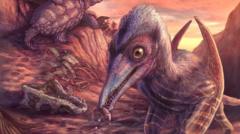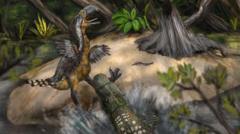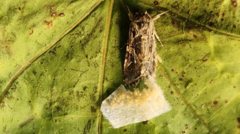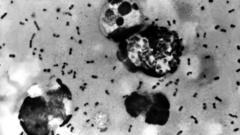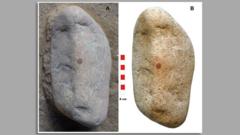Scientists have made an exciting discovery of a 200 million-year-old pterosaur species called Eotephradactylus mcintireae, translating to "ash-winged dawn goddess." The jawbone of the creature was extracted from an Arizona site in 2011, but advanced scanning has unveiled this previously unidentified species linked to the ancient flying reptiles that once soared above the dinosaurs.
The research team, hailing from the Smithsonian's National Museum of Natural History, is thrilled to announce that this pterosaur represents the earliest of its kind found in North America, with fossils dating back to around 209 million years ago. The jawbone, roughly the size of a seagull, was preserved in volcanic ash within a Triassic riverbed.
Dr. Ben Kligman, one of the researchers, explained that fossils from small pterosaurs are rare because they tend to be fragile and easily destroyed before preservation. The Petrified Forest National Park site was once a vibrant river ecosystem, promising extraordinary insights into prehistoric life.
Analysis of the pterosaur's teeth suggests it primarily feasted on hard-shelled ancient fish. This location has revealed snapshots of various animals from the era, including giant amphibians and armoured crocodile relatives, showcasing a rich and diverse ecosystem of the Triassic period.
Fossils like these help paint a picture of a time when extinct creatures coexisted with their more familiar modern relatives, establishing critical evolutionary connections that continue to amaze scientists today.

